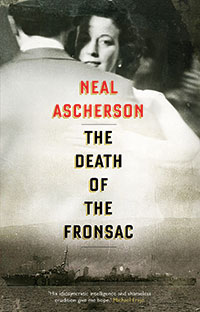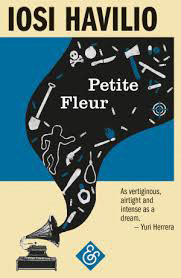Neal Ascherson is an intriguing fellow. As a working class boy from Edinburgh he won a scholarship to Eton, served as a marine for what he came to regard as the ‘empire of injustice’ in Malaya, and went on to be described by his Cambridge tutor, the eminent Marxist historian Eric Hobsbawn, as ‘the most brilliant student I ever had.’ He dreamt of being the greatest novelist of his generation, but instead got hooked by the buzz of journalism, and became one of the most respected in his field. But his love for literature stuck and he showed a gift for evocative language in his regular fiction reviews. Finally, at the age of 84, he has written his first novel.

Ascherson’s book reviews are characterised by their generosity of spirit, zealous curiosity for the subject, and a lack of pretentiousness. The same qualities mark The Death of the Fronsac, which tracks the social impact of a 1940 battleship
explosion in the Firth of Clyde. Ever the historian, Ascherson begins the novel with a prologue explaining the context of the Phoney War, the pre-war carving up of Poland, and his own boyhood connection with Greenock, the now shabby port which once oversaw the launch of steamships and merchant fleets into ‘the seas of the world.’
This big-hearted, thought-provoking novel shines a light into a time and place few writers have conveyed so well
Ascherson has a particular sensitivity for landscape. His story begins with a poetic description of the view from the sunlit stone tenements of Greenock, up through the black, rain-misted Argyll mountains, to the ‘tilting’ hill-set town of Gourock, where the Clyde opens its arms to the Irish Sea. For anyone who has walked along the Gourock waterfront at sundown, tracking the light of a tiny ferry as it snakes through the same vista, it’s a highly seductive opening for a sympathetic human story.
Ascherson introduces a rich, well-drawn cast, including characterful old locals, steely-eyed military men, a troubled truanting schoolgirl, and her spirited, frustrated mother. But his main interest is in Maurycy ‘Mike’ Szczucki, the restless Polish soldier stationed among French naval forces in Greenock. It is Mike’s poignant, shifting relationship with his forever-changed home country which provides the main themes of the novel; the nature of ‘home’, and the ambiguous emotional effect of the loss of national identity.
Ascherson’s urge to impart information occasionally drags the narrative a tad, and some of his dialogue is not as casual and convincing as it might be. But his prose is intelligent and surprisingly romantic, and this big-hearted, thought-provoking novel shines a light into a time and place few writers have conveyed so well.
You’ll read the whole of the hallucinatory Petite Fleur in a couple of hours, and be reluctant to pop the bubble afterwards
Though it also begins with an explosion, Iosi Havilio’s Petite Fleur has almost the opposite impact to Ascherson’s diligent feat. This 120 page novella cares little for edification or reliable facts; instead, like the works of his feted fellow Argentinian César Aira, it has the quality of an intense, surreal, inexplicable dream.










